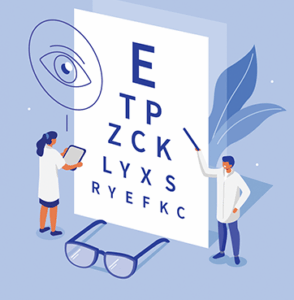 To be crystal clear, not all vision tests are equal. Do you know the difference between a vision screening and an eye exam? A vision screening is a basic test to detect eye or vision issues and can be done in a physician’s office or even by a school nurse or other health care provider. It can be done quickly and without any special equipment. If problems are detected through a vision screening, a recommendation to see an ophthalmologist will be made.
To be crystal clear, not all vision tests are equal. Do you know the difference between a vision screening and an eye exam? A vision screening is a basic test to detect eye or vision issues and can be done in a physician’s office or even by a school nurse or other health care provider. It can be done quickly and without any special equipment. If problems are detected through a vision screening, a recommendation to see an ophthalmologist will be made.
An eye exam, on the other hand, not only screens for vision acuity but also exams the eye for diseases and overall eye health. It is conducted by an optometrist or ophthalmologist and includes high-level medical equipment taking an in-depth look into the eye. An eye exam can diagnose:
- Age-related macular degeneration
- Amblyopia (lazy eye)
- Cataracts
- Convergence insufficiency, which prevents eyes from working together
- Diabetic retinopathy, which is damage to the retina
- Glaucoma
- Refractive errors, such as blurred vision, nearsightedness, farsightedness, and astigmatism
- Strabismus (crossed eyes)
The EWTF Vision Benefits, administered by VSP, offers plan participants a vision exam and vision analysis once each calendar year at no charge if conducted by a VSP provider. If lenses for glasses are prescribed, they are covered at 100% of the allowable charge once per calendar year and new frames have a $150 allowance every two calendar years. Contact lenses are covered up to $100 once every two calendar years. Exceptions are made for prescriptions that change before eligibility for new lenses, frames or contacts and additional benefits such as progression lenses, light-reactive lenses and anti-glare lenses are also afforded to Plan participants when using a VSP provider.
Visit EWTF Vision Plan benefits to learn more.

